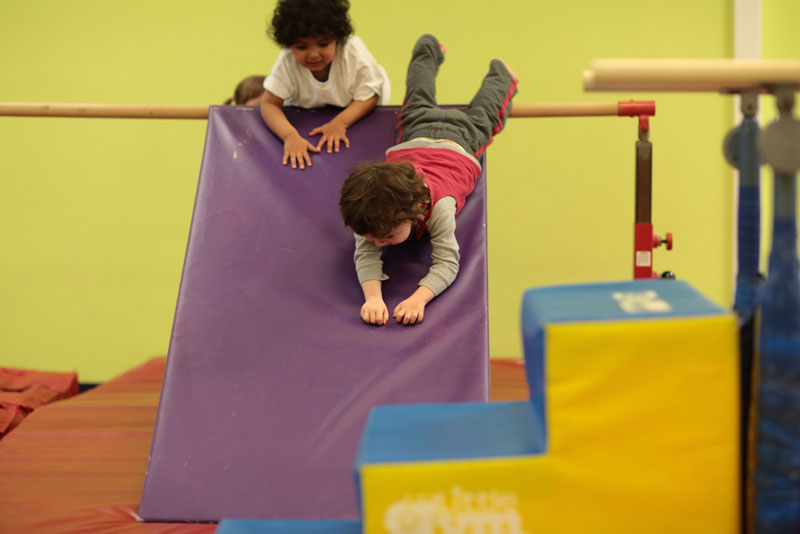Challenging behaviors? When THEY GO LOW, YOU GO LOW!

Get downstairs (in their brains)!
Your kid won’t listen. It’s a constant battle. She only wants to do what she wants to do.
He won’t sit still. He keeps throwing things or hitting other students. He’s constantly disrupting class.
All of the above situations can be triggers for parents or teachers. For parents, it can be especially stressful after a long day, when you’re trying to figure out how you’ll get the kids to practice, what’s for dinner, and when you’re going to get to that never-ending pile of laundry.
For teachers, it can feel impossible to find time for a challenging student when there are 20 other kids in class, you’re being observed, lesson plans are due, state testing is coming up and you’re just trying to get your lesson in!
Why are they being so bad?!?!?! Why can’t they just fall in line and comply?!?!?!
Talking about a child’s behavior can be an endless cycle of behavior/reaction/behavior/reaction, without ever solving the problem. Let’s talk about the operating system that is causing the malfunction…his BRAIN!
Daniel Siegel, MD and Tina Payne Bryson, PhD, co-authors of The Whole Brain Child, describe the brain in terms of a house that has two sections: the “upstairs” brain, and the “downstairs” brain. The downstairs brain includes the brainstem and the part of the brain responsible for emotions, the limbic system. The downstairs brain is the “primitive” brain, in charge of basic functions (like breathing and blinking), reactions and impulses (fight or flight) and emotions (fear or anger). Think of the first floor of a house. So many of our basic needs are met there. There’s a kitchen, a dining room, and a bathroom. Your basic needs are taken care of downstairs, AND in your downstairs brain.
Your “upstairs” brain is much more evolved. This is where your thinking, reasoning, imagining and planning (including motor planning) occurs. Your upstairs brain takes care of emotional control, sound decision-making, thinking before acting, empathy, and morality. Wow! That’s where we want our kids to be! But that’s not always the case!
When a child’s upstairs brain is working well, they may not be perfect, but you most likely won’t see the challenging behaviors that can throw a real monkey-wrench into your day. There is some level of reasoning that can help find a solution to the problem.
When the upstairs and downstairs brain are working together, the upstairs, evolved brain can keep tabs on the downstairs brain and make sure that reactions, impulses and emotions are kept at manageable levels. Conversely the downstairs brain can give the upstairs brain information about the body and what it needs. Staircases go up and down…our job as parents and teachers is to help kids build a really strong staircase! We are building this staircase while the upstairs brain is under construction. Unfortunately, construction won’t really be finished until their 20s, and even then, we are forever renovating (that’s neuroplasticity). Geez, can’t we just buy a fully furnished house?!?! Nope. Welcome to parenting (and teaching!).
When a child has big emotions, a meltdown, tantrum, hits, kicks, bites, throws things, or other challenging behaviors, they are stuck in their downstairs brain! It’s like putting a baby gate at the bottom of the stairs. OK, it’s more like having a baby gate on the stairs, four laundry baskets, an angry pitbull and spilled bucket of Legos on the stairs…the upstairs brain is completely blocked!
What do I do?
Remember all those times you did all that talking to your child/student? You explained to them how they made a bad choice, and gave a soliloquy of reasons about what they did wrong, what their “consequence” is and what they have to do next time to avoid said consequence? Yeah…it didn’t work. It didn’t get in. You were yelling “upstairs” and nobody was up there! That child was stuck in the downstairs brain, and that’s where you needed to be. Opportunity missed, but don’t worry, there will be others!
When a child is in their downstairs brain, unable to reason or control their emotions, the best way to help them is to meet them in their downstairs brain. Validate their big emotions. Be present. Be close, if they’ll let you, and if they want/need deep pressure to help calm down, nothing says “I’m here for you” like big dose of proprioception (aka, a hug). Give them what they need so they can unlatch the gate, let the pitbull outside, sweep away the Legos and start to access their upstairs brain (I have no solution for the endless pile of laundry).
Occupational Therapists understand the downstairs brain. We are master stair builders (stair masters?) because we use sensory input to build a strong downstairs brain, which allows for more body confidence and motor planning as the upstairs brain develops. In fact, good sensory-based OT can make a child zoom up the stairs and access their upstairs brain! We work on sensory integration, in the downstairs brain, and then develop the motor planning, visual-motor, and executive functioning skills needed to be independent, integrated, capable kids with a gorgeous two-story house!
So, the next time you’re faced with a challenging behavior, don’t snap! Remind yourself…he’s in his downstairs brain. It’s not a bad behavior, his downstairs brain has been hijacked. Resist the urge to punish, he needs help! Don’t yell, validate. Each time you help, you’re helping to clear the path to the upstairs brain. When you take away their phone or some other “consequence” (punishment), you run the risk of making them angry. That certainly will not get you anywhere close to the staircase, thus avoiding upstairs, which you need.
And if your fuse is short? If you have no more patience? If you’re in your own downstairs brain? The fire alarm just went off…..grab a dish towel and start fanning!
Their behavior is information. Don’t react to the behavior. Help the brain. There will be less fighting, less yelling, no need for punishment, and when things are calm, you can all head upstairs and cuddle
Tags: child therapy services in monmouth county, In-school therapy services, Occupational Therapy, PowerPlay Therapy, School Therapy Services, therapy services NJ
Categorised in: Pediatric Occupational Therapy Blog
